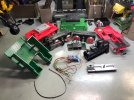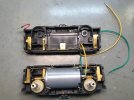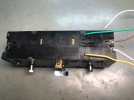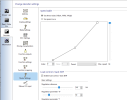I just completed converting an LGB 2015D Steamer and its matching motorized tender to DCC sound, both with clam shell motor blocks. I had to cut half of the lead weight in the boiler and relocate the two pieces to the cab's water and coal compartments to fit an ESU LokSound 5L DCC sound decoder inside. A 40mm speaker was placed into the firebox. For the tender's decoder, I first tried installing an ESU LokPilot 5L locomotive/function decoder but even after matching the settings on the locomotive's decoder, I could not get the tender's starting and stopping momentum to behave like the sound decoder. So, I then installed another LokSound 5L sound decoder into the tender..........success, the tender behaves almost exactly like the locomotive even though the locomotive is heavier than the tender. Next, I decider to take advantage of the tender's sound decoder and installed a speaker shown below. Now, the deeper sound in the tender really enhances the sound quality, although I had to reduce a few of the locomotive's decoder sounds to prevent echo such as the station announcements, bell, and chuff. Otherwise, the dual sound decoders sound fabulous. In the future, for this type conversion with a matching motorized tender, I'd probably just run a cable from the locomotive to the tender for the DCC conversion, including the second speaker in the tender. I'll post a link latter to a video of this set operating on my DCC Test Stand Roller Wheels so you can hear the sound quality.
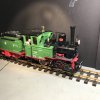
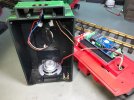


-
6
- Show all


